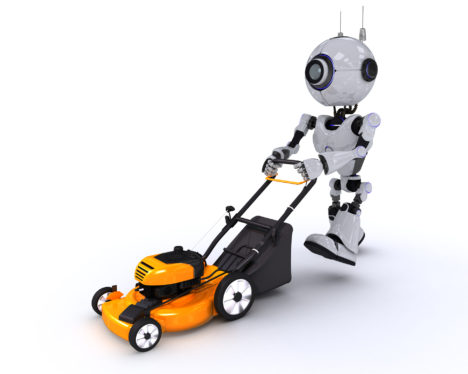It’s natural to fear the robots, but you’re missing the point
While the march forward with AI has some of us wondering if we will have jobs in 20 years, Jay Morgan, says what we should be thinking about are the creative opportunities.
Three hundred years ago you would most likely have engaged in some kind of craftsmanship or trade.
Maybe you grew crops or bound books. If someone had said that in the future most people would make a living by generating intellectual property by sitting at a desk, you would have said they were mad. The truth is that even these traditional tasks are increasingly being automated.
Once we were able to mechanise industry we were able to focus on science, medicine, academia and engineering, and they flourished.
History teaches us that with each paradigm shift in the pursuit of progress we find ourselves adapting the change with surprising ease and little resistance. Because let’s face it, the change is inevitable because the upside is so big.
Speaking at SXSW in March, Kevin Kelly, founder of Wired, said: “In decades to come we will be embarrassed by the tasks we used to do ourselves”.
The future is utilising AI to super-charge our work and learning to work side-by-side versus competing with it.
In fact learning to implement and work side by side with AI is going to be the new skillset people will need if they want to be successful in the coming wave of innovation.
At this stage, it’s helpful to define what we’re talking about when we say AI. Most people leap to terminator style autonomous, humanoid robots but the AI we’re most likely to employ is far less sinister and much more useful.
Wired’s June 2016 issue covers the coming ‘cognitive revolution’ with its cover title The End Of Code. In the new world of computer programming we won’t program computers to do tasks, we’ll train them.
If you want a computer to recognize a cat you don’t tell it to look for whiskers, ears, fur, eyes. You simply show it thousands and thousands of pictures of cats and it works out what a cat is. If it keeps mistaking foxes for cats you don’t re-write the program, you just coach it a bit more.
That’s a fundamental shift in the way we program and interact with the computers systems we create. You could say it’s a lot more like teaching a child, a lot more human-like.
To begin with it’s easy to see which tasks right now could be automated. Data entry, day-to-day accounting, reporting, turning the dish-washing on and off, these things could easily be taken care of through autonomous computers.
But stretch the thinking a little further and it becomes apparent just how pivotal this new wave of innovation will be. Take law for instance. It’s a profession largely made up of the governing law and case precedence. You could show an AI thousands of cases and ask it to recognize what a successful defense or prosecution looks like.
Then anytime you need legal advice you could throw it your scenario and it would give you a recommended course of action as good as any experienced lawyer. In time it would be better.
Take this new AI brain and put it in the cloud and charge corporations a monthly fee to access it and you have completely disrupted an entire category.
That doesn’t mean that lawyers will be out of work, it simply means that the boring or ‘procedural’ aspects of the job will be automated leaving more time for cognitive focus and less time on boring work.
The good news for those of us in the creative industry is that our jobs are safe. For now.
A 2016 McKinsey study has indicated that while only 4% of work activities across the economy are made up of creative roles the automation of procedural tasks would create the potential for generating more meaningful work. Just like the seismic shift we experienced in the industrial revolution we will see the same shift with hundreds of job types materialize that never existed before.
There are already opportunities to work with AI for brands. Conversational commerce – chatting to a brand over a direct messaging app to find out information and purchase products – is about to swallow the traditional smartphone app.
For conversational commerce to work we need to create an AI bot with the ability to talk, in natural language, to consumers and understand intent to match products tailored to requests. Essentially if a brand was a person how would it act?
And once we train this brand brain where else can we deploy it? Dynamic programmatic ads, customer service, other messaging platforms, even SMS.
With the speed of change already so fast, AI threatens to speed this change up even faster. Staying on the sidelines for this one really isn’t an option.
In his keynote this year at SXSW Kevin Kelly even confessed his previous fear and concern for AI has turned to one of fascination and excitement. AI and automation is inevitable and it’s better to embrace is so we can steer it to our benefit.
Whatever you’re doing today, in the very near future at least half of your job will be taken care of by AI. Start thinking about what you really love doing, because bots are going to take care of the rest.
Jay Morgan is group digital creative director at J. Walter Thompson and Webling
Sources
- http://www.techcastglobal.com/-/ai-and-future-jobs
- http://www.mckinsey.com/business-functions/business-technology/our-insights/four-fundamentals-of-workplace-automation
- Kevin Kelly’s Keynote Speech at SXSW 2016 (seen in person) https://www.youtube.com/watch?v=pZwq8eMdYrY



Yeah, right. How were you supposed to know? Men like you built the hydrogen bomb. Men like you thought it up. You think you’re so creative. You don’t know what it’s like to really create something. to create a life. To feel it growing inside you. All you know how to create is death and destruction.
Dont be so sexist Sarah..
If a man said something similar to what you said, for example
“You women don’t know what it’s like to to be the giver of the life force itself – without men you can never get pregnant.”
people would be screaming bloody murder!
Whilst i disagree with a lot of what the columnist wrote, I think you motherhood and lifeforce statement has the ring of the hysterical about it. Women kill their female babies in some countries – women led people into the gas chambers at Auschwitz.
In fact women killing their babies is so common that they get a lesser sentence if they do it in the first 12 months of their baby’s life.
But we accept that people of both sexes sometimes do bad things. We dont blame one gender.
@ Non-sexist Pig
http://www.imdb.com/title/tt0103064/
Hi Arnie
thanks for the link
LOL -a movie quote got me!
tl;dr
“AI and automation is inevitable and it’s better to embrace it so we can steer it to our benefit”
HUD: Visualising human-like responses…
“Well played, sir”
“No shit, sherlock”
“Boom – Nailed it!”
Dramatic effects filter: Pause for 00:00:02:34
Vocal response unit: Initiated
“Some great points here, Jay. KK is right to be somewhat optimistic, however I’ve seen the future and it’s certainly not all beer and skittles. I recommend you watch the satirical children’s cartoon WALL-E for further context. Cheers – I’ll be back”